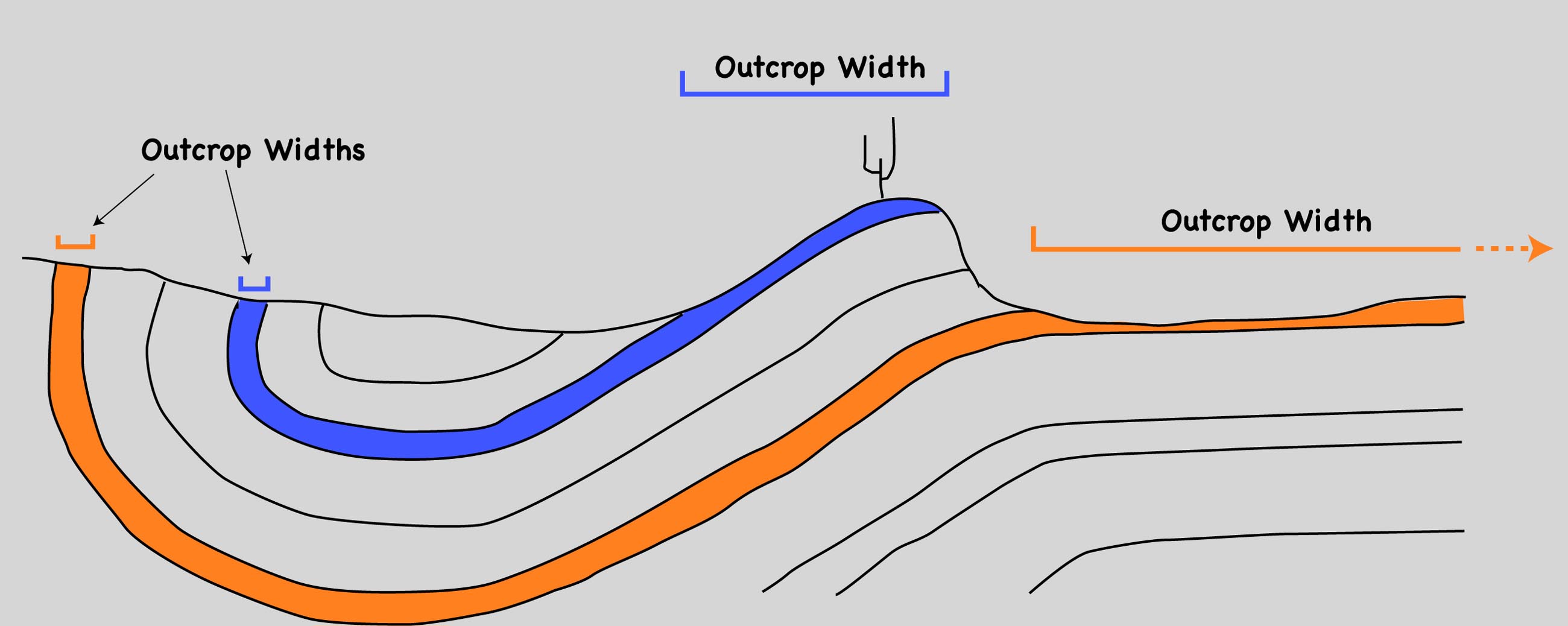
Outcrop width is mostly a function of the bedding dip, and the topography.

Note that where an individual rock unit intersects the land at a high angle, it crops out over a smaller area. Where beds are steep and the topography is gentle, such as at the left side of the diagram, the outcrop width is approximately the thickness of the unit. By contrast, the outcrop width increases when the topography and the dip of the rock approach parallelism. In the case of the blue unit near the center of the diagram, it forms a "dip slope" and outcrops over a fairly large area even though it is dipping moderately. Where both the rock and the topography are nearly horizontal, units can crop out over very extensive areas, even though they are relatively thin.
And here's another example in a block model:

Thanks John!
Back to Structural Geology Patterns
Back to Structural Geology Images
Back to Geology Images